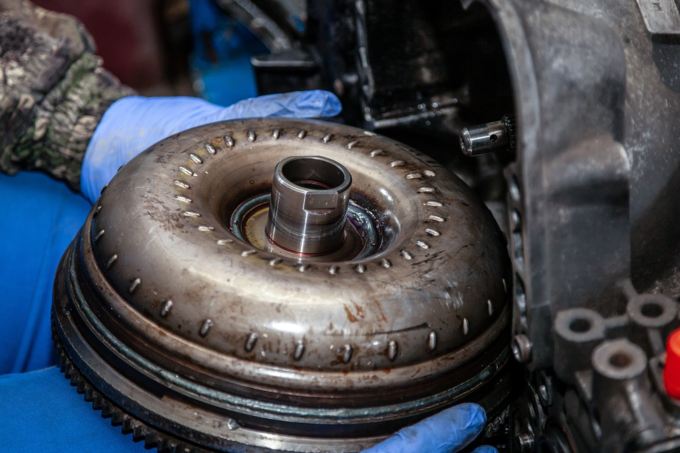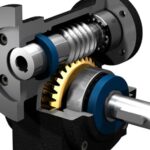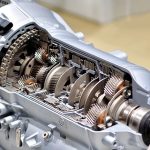The vehicles and machineries with automatic transmission does not have a clutch, instead, it has a torque converter. But, how a torque converter works or solves the purpose of a clutch? To give you an idea, it works on the same principle as the fluid coupling.
How a Torque Converter Works
As the name suggests, it converts the torque of the engine and transmits it to the transmission system.
As soon as the flywheel of engine starts rotating, the torque converter housing as well as the pump also starts rotating in same speed and direction. Because of the profile of the pump blades, the fluids inside the torque converter are pushed out centrifugally. Because of the pressure developed by the pump, the fluids are forced into the blades of the turbine and make it rotate in the same direction as the pump. The fluids enter to the outer periphery of the turbine and leave from the inner periphery and reaches to the stator blades there. The function of the stator is to guide the incoming fluid from the turbine to reach at a specific angle to the pump.
If the turbine is rotating at a speed lower than that of the pump (i.e., when the vehicle is accelerating) then the fluids from the turbine hits the front sides of the stator blades and the one way clutch prevents it from rotating. In this condition the fluids leave from the stator hits the pump at a “helping” angle to increase the torque (or multiply the torque) and thus increase the speed of the turbine.
When the vehicle achieves its constant speed, then the angle at which the fluids leaving from the stator change and no more torque multiplications happens.
While retarding, the speed of the turbine increases than that of the pump and the fluid from the turbine hits the back sides of the stator blades and make the stator rotate at the same direction as the pump and turbine and the fluid from the stator hits the pump in such angles that the torque reduces.
Major Parts of a Torque Converter
A torque converter typically has three major components: impeller or pump, turbine and stator or reactor.

Impeller or Pump: The pump is made up of blades and works very similar to a centrifugal pump. It is mounted rigidly with the torque converter housing (shown in blue). The whole torque converter housing in turns is mounted rigidly with the flywheel. So, it rotates with the flywheel.
Turbine: Constructions of the turbine is very much similar to that of the pump but the orientation of the turbine blades are opposite to that of pump. The turbine is mounted on transmission input shaft.
Stator or Reactor: The stator has very complex guiding blades arrangements. It is mounted by a one way clutch with the transmission housing. The one way clutch allows the stator to rotate in one direction and prevent it from rotating to another.
Conclusion
You will find the use of the torque converter in almost all sort of automatic transmission vehicles: from passenger cars to heavy off highway vehicles. The design of the blades of the turbine, stator and the pump is the key of how effectively a torque converter works.


